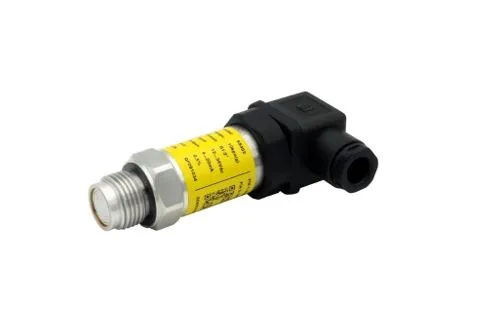Understanding Flush Mount Pressure Transducers: A Complete Guide
When it comes to measuring pressure in demanding industrial environments, not all sensors are created equal. If you work in food processing, pharmaceuticals, or any industry where hygiene and accuracy matter, you’ve probably heard about flush mount pressure transducers. But what makes them different from regular pressure sensors, and why should you care?
Let me walk you through everything you need to know about these specialized devices, without all the technical jargon that usually makes your eyes glaze over.
What Exactly Is a Flush Mount Pressure Transducer?
Think of a pressure transducer as a translator. It takes pressure (which we can’t directly measure electrically) and converts it into an electrical signal that machines can understand and display. The “flush mount” part is where things get interesting.
Unlike regular pressure sensors that stick out with exposed parts, a flush mount design sits perfectly flat with the surface it’s measuring. There are no gaps, no pockets, and no places where stuff can get stuck. This might not sound like a big deal until you’re trying to clean out yesterday’s batch of yogurt from your processing line or ensuring no bacteria can hide in your pharmaceutical equipment.
The flush mount pressure transducer design eliminates dead space where liquids, particles, or contaminants could accumulate. This makes cleaning easier and ensures that what you’re measuring today isn’t contaminated by what you measured yesterday. For detailed specifications and product options, visit sendo-sensor.com to explore various models designed for different industrial needs.
Why Industries Love Flush Mount Designs
I’ve talked to plenty of plant managers and engineers over the years, and they all say the same thing: cleaning is expensive, and contamination is unacceptable. That’s where flush mount sensors shine.
In food and beverage production, any crevice or pocket in your equipment is a potential home for bacteria. Even the smallest gap can harbor microorganisms that multiply and contaminate entire batches of product. A flush mount sensor eliminates these hiding spots completely.
The pharmaceutical industry faces even stricter requirements. When you’re making medicine, there’s zero tolerance for contamination. Equipment needs to be sterile, and every component must be cleanable to validated standards. The smooth, flat surface of a flush mount pressure transducer makes this possible.
But it’s not just about hygiene. These sensors also work great in applications with viscous fluids, slurries, or materials that tend to clog regular sensors. Paint manufacturing, chemical processing, and wastewater treatment all benefit from the flush design. If you want to learn more about specific applications, industry experts can help match the right sensor to your unique process requirements.
The Magic of 316L Stainless Steel
Most quality flush mount sensors use 316L stainless steel for the parts that contact your process media. Why this specific material? It’s not just because it sounds fancy.
316L stainless steel offers an excellent combination of corrosion resistance, durability, and compatibility with cleaning chemicals. The “L” stands for low carbon content, which makes it more resistant to corrosion after welding and better suited for harsh environments.
This material can handle aggressive cleaning agents, high temperatures during sanitation cycles, and corrosive chemicals without degrading. For operations that need to meet FDA or EHEDG standards, 316L stainless steel is often a requirement, not just a preference.
The construction quality matters significantly when selecting a sensor. At sendo-sensor.com, you’ll find sensors built with certified materials that meet international standards for food, pharmaceutical, and industrial applications. To learn more about material compatibility for your specific application, it’s worth consulting with experts who understand both the sensor technology and your industry requirements.
Understanding Pressure Ranges and Outputs
Here’s where some people get confused. Flush mount sensors come in different pressure ranges, and picking the wrong one can lead to inaccurate readings or sensor damage.
Pressure ranges typically span from low pressures (like 0-1 bar) up to very high pressures (300 bar or more). The key is matching your sensor’s range to your actual operating pressures. You want some headroom for pressure spikes, but you don’t want a sensor rated for 100 bar when you’re measuring 2 bar, because accuracy suffers at the low end of the range.
As for outputs, most flush mount sensors offer analog signals. The most common are 4-20mA current loops and 0-10V voltage outputs. Current outputs are generally more resistant to electrical noise over long cable runs, which is why they’re popular in industrial settings.
Some modern sensors also offer digital outputs like IO-Link or fieldbus protocols, which provide more information and diagnostic capabilities. But analog outputs remain the workhorse of industrial pressure measurement because they’re simple, reliable, and compatible with virtually any control system.
Installation Considerations
Installing a flush mount pressure transducer correctly matters more than you might think. The whole point of the flush design is maintaining that smooth surface, so proper installation is critical.
The sensor needs to sit perfectly flush with the inside wall of your pipe or vessel. Even a slight recess or protrusion defeats the purpose. Most sensors come with specific installation instructions, including torque specifications for tightening. Over-tightening can damage the sensor, while under-tightening might leave a gap or cause leaks.
Thread types matter too. You’ll commonly see NPT threads in North America and G threads (BSPP) in Europe. Some applications use special hygienic connections like tri-clamp fittings, which are common in food and pharma industries because they’re easy to clean and don’t require thread sealants that might contaminate the process.
Maintenance and Calibration
Good news: flush mount sensors generally need less maintenance than other designs because they don’t have crevices that trap material. However, they’re not maintenance-free.
Regular calibration ensures your readings stay accurate. How often depends on your application and accuracy requirements. Some industries require annual calibration, while critical applications might need quarterly or even monthly checks.
Visual inspections during routine maintenance help catch issues early. Look for signs of corrosion, damage to the flush surface, or buildup that regular cleaning didn’t remove. Even with the best designs, extremely difficult applications might eventually cause wear that affects performance.
Proper maintenance extends sensor life significantly. You can learn more about extending sensor life in your specific application by considering maintenance schedules that factor in your process conditions, cleaning frequency, and accuracy requirements. Many manufacturers provide detailed maintenance guidelines and calibration services.
Choosing the Right Sensor for Your Application
With so many options available, how do you choose the right sensor? Start by asking yourself these questions:
What’s my pressure range, and what accuracy do I need? What’s the temperature of my process? What chemicals or cleaning agents will the sensor contact? Do I need special certifications like FDA compliance, ATEX ratings for hazardous areas, or 3A sanitary standards?
The electrical output type should match your control system. The process connection should fit your existing equipment or planned piping. And don’t forget about environmental factors like ambient temperature and whether the sensor needs IP67 or IP69K ingress protection.
Reputable suppliers offer technical support to help you navigate these decisions. Their ready designs for food, pharma, and industrial applications come with wide pressure ranges and reliable analog outputs, making selection easier for standard applications while still offering customization when needed.
The Bottom Line
Flush mount pressure transducers solve real problems in industries where cleanliness, accuracy, and reliability matter. They’re not the cheapest sensors available, but they often save money in the long run through reduced downtime, easier cleaning, and fewer contamination issues.
Whether you’re upgrading existing equipment or designing a new process line, understanding what makes these sensors special helps you make better decisions. The flush design, quality materials like 316L stainless steel, and appropriate pressure ranges all work together to create a sensor that performs reliably in demanding applications.
For food processors ensuring product safety, pharmaceutical manufacturers maintaining sterility, or any operation where hygiene and reliability matter, investing in quality flush mount sensors makes practical and economic sense. Consulting with experienced suppliers who understand both the technology and your industry requirements can save time and prevent costly mistakes.



